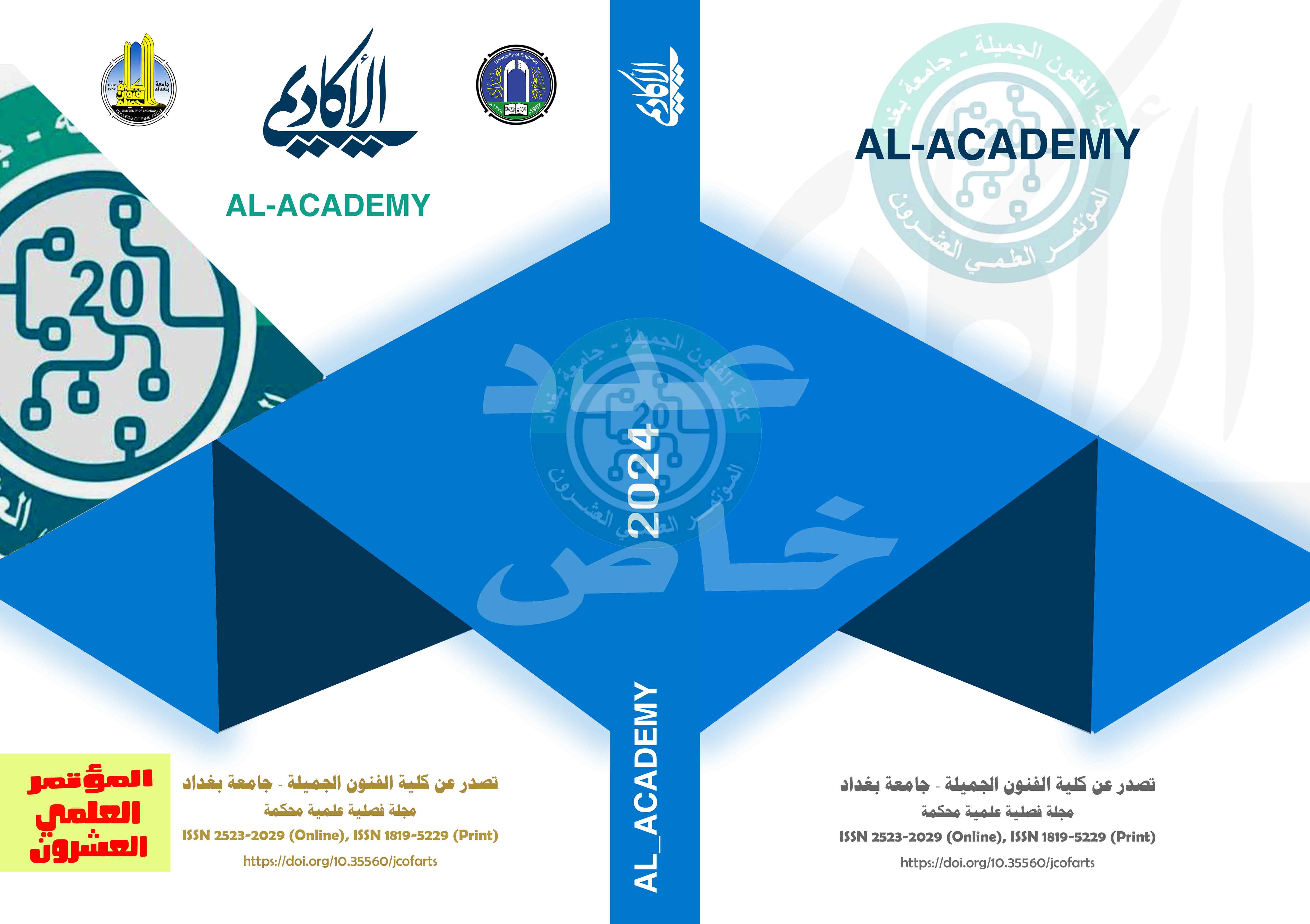Hyperrealism and its representations in artificial intelligence poster design
DOI:
https://doi.org/10.35560/jcofarts1444Keywords:
Hyperrealism representations artificial intelligenceAbstract
The post-modern period witnessed the emergence of advanced artistic methods due to many aesthetic and artistic variables, which formed the basis for the emergence of new and innovative concepts in the field of design that were affected by these variables, especially the emergence of the school of hyper-realism, which tends to dazzle the recipient with the ability to formulate an artistic work that conveys the smallest details. Similar to reality through a creative simulation that has its own unique features, and whose formal features and artistic trends began to spread in a hyper-realistic design mixture that inspires astonishment for those arts that gave the designer a new way of presenting ideas and a different vision for design, and in an era where machines have become the leaders in achieving what he is unable to achieve. Humans have the same level of accuracy. Artificial intelligence techniques have emerged with great effectiveness in the artistic and creative field, paying attention to the high quality of the design work and its precise details by finding many innovative alternatives. Artificial intelligence has saved a lot of time and effort thanks to its capabilities in selecting ideas with ease and high accuracy. During the adoption of artificial intelligence, which derives its components from the need of society, as it is considered a creative art that carries a purposeful artistic message in attracting the attention of the recipient. The second chapter included the theoretical framework in two sections.The first section: The origins and concept of hyperrealism, the intellectual creativity of hyperrealism, the aesthetic dimensions of hyperrealism, while the second section: It included the emergence of artificial intelligence, the artificial intelligence technology for hyperrealism, applications in hyperrealism, and the third chapter included the research procedures that The descriptive approach was adopted to analyze advertising posters for Walt Disney Company’s American films for the period (2014-2019), and the fourth chapter included results, conclusions, proposals, and recommendations
References
Academy, Shorouk International Library, 4th edition.
Ibn Manzur: (1989), Lisan al-Arab, Dar al-Maaref, Cairo, 1st edition.
Abu Al-Walid Ibn Rushd: (1999), the article’s separation between wisdom and Sharia from communication, Dar Al-Ma’arif, Cairo, 3rd edition.
Ahmed Kazem: (2012), Artificial Intelligence, Imam Sadiq University, peace be upon him, College of Information Technology, Department of Software Engineering.
Now Bonnet: (1993), Artificial Intelligence: Its Reality and Future, Translated by: Dr. Ali Sabri Farghali, The World of Knowledge. 7. D. Asmaa El-Sayed Mohamed, Dr. Karima Mahmoud Mohamed: (2020), Applications of Artificial Intelligence and the Future of Educational Technology, Arab Group for Training and Publishing, Cairo, Egypt, 1st edition.
Dr.. Jamil Saliba: (1982), The Philosophical Dictionary, Lebanese Book House, School Library, Lebanon, 1st edition.
Dr.. Diana Muhammad Kamel: (2023), The Future of Design in the Age of Artificial Intelligence, International Arab Journal of Digital Art and Design, third issue.
Nermin Magdy: (2020), Artificial Intelligence and Machine Learning, Introductory Booklet Series, Issue 3, Arab Monetary Fund, United Arab Emirates.
A B Tiffin, Nobuyoshi Terashima Jun. (2005). Hyperrealism model of the third millennium. B.M: B.N.
Ibrahim, and others Mustafa. Bit. Intermediate dictionary. Cairo: Dar Al-Da'wa.
Edward Lucy Smith. (2000). Postmodernist artistic movements since 1945. Fakhri Khalil, The Translators, Baghdad: House of General Cultural Affairs.
Amal Halim Al-Sarraf. (2009). A brief history of art. Amman: Arab Community Library for Publishing and Distribution.
Amal Halim Al-Sarraf,. (2006). Brief aesthetics. Amman: Arab Community Library for Publishing and Distribution.
Amhaz Mahmoud. (2009). Contemporary artistic currents. Beirut: Publications Distribution and Publishing Company.
Bashar Shamil Al-Khafaji. (2015). Visual thinking and creative imagination effects in contemporary graphic design. Baghdad: Unpublished doctoral dissertation, University of Baghdad, College of Fine Arts.
Shaima Kamel inside Al-Waeli. (2013). Metaphor in the virtual image of the commercial. Baghdad: University of Baghdad, College of Fine Arts, Department of Print Design, PhD thesis.
Ali Shinawa Al Wadi. (2012). Philosophy of art and aesthetics. Amman: Dar Safaa for Publishing and Distribution.
Fatima Ibrahim Ahmed Bakdam. (2017). Hyperrealism as an introduction to creating contemporary conceptual paintings. Egypt: Journal of Fine Arts and Art Education, Volume One, Issue Two, published research.














